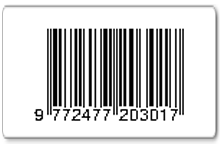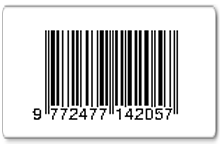The Development of Local Wisdom-Based Physics Cognitive Ability Assessment Instrument for Senior High School Students
Abstract
Today's young generation hardly recognizes the values of local wisdom around them. That is because of their lack of curiosity towards wisdom itself and the lack of means to learn it. Therefore, local wisdom needs to be integrated with learning particularly in high schools, especially in Klaten Regency. This study aims to develop an instrument of cognitive ability assessment based on local wisdom and find out its validity and reliability. The development of the assessment instrument refers to the instrument development model by Oriondo and Dallo-Antonio which is divided into 4 stages: designing the instrument, determining the validity of the instrument, testing the instrument, and determining the reliability of the instrument. The instrument was validated by educational evaluation experts, physicists, physics education experts, and practitioners. The content validity of the instrument was analyzed using the V-Aiken formula. The instrument consisted of 50 valid items based on expert judgment with an average coefficient of V-Aiken>0.78. Researchers tested 480 students and then analyzed the results of the trials using the Microsoft Excel, Quest, Parscale to determine their validity and reliability. The analysis showed that 50 items were fit with the Partial Credit Model (PCM). The reliability results showed 0.82.
Keywords
Full Text:
PDFReferences
Abedalaziz, N, & Leng, CH 2013, ‘The Relationship between CTT and IRT approaches in analyzing item characteristics’, The Malaysian Online Journal of Education Science, vol. 1, no. 1, pp. 64-70.
Adam, R. J, & Khoo, S, T 1996, Quest: the interactive test analysis system v'ersion 2.1, The Australian Council for Educational Research, Victoria.
Adeyemo, SA 2010, ‘The relationship between students’ participation in school based extracurricular activities and their achievement in physics’, International Journal of Science and Technology Education Research, vol. 1, no. 6.
Adodo, SO 2013, Effects two-tier multiple choice diagnostic assessment item on students, learning outcome in basic science technology (BST)’ academic. Journal of interdisciplinary Studies by MCSER-CEMAS-Sapienza University of Rome, vol. 2, no. 2, pp. 201-210.
Aiken, LR 1985, ‘Three coefficients for analyzing the reliability and validty of ratings’, Educational and Psychological Measurement, vol. 45, no.1, pp. 131-42.
Aina, JK, & Akintunde, ZT 2013, ‘Analysis of gender performance in physics in colleges of education, nigeria, Journal of Education and Practice, vo. 4, vol. 6, pp. 1– 6.
Arends, RI, & Kilcher, A 2010, Teaching for Student Learning, Madison Avenue, New York.
Azwar, S, 2012, Reliabiltas dan validitas. Edisi 4. Pustaka Pelajar, Yogyakarta.
Baran, M 2016, ‘An analysis on high school students’ perceptions of physics courses in terms of gender (a sample from turkey)’, Journal of Education and Training Studies, vol.4, no. 3, pp. 150–60.
Bevel, RK 2010, ‘The Effect of Academic Optimism on Student Academic Achievement in Alabana’, Disstertation, The University of Alabana, Tuscaloosa
Chandrasegaran, Al, Treagust, DF, & Mocerino, M 2007, ‘The development of a two-tier multiple-choice diagnostic instrument for evaluating secondary school students’ ability to describe and explain chemical reactions using multiple levels of representation’, Chemistry Education and Practice, The Royal Society of Chemistry, vol. 8, no. 3, pp. 293-307.
Cohen, L, Manion, L & Morrison, K, 2011, Research methods in education. London, Routledge.
Dahmann, SC, 2017, ‘How Does Education Improve Cognitive Skills? Instructional Time versus Timing of Instruction, Labour Economics, viewed 3 March 2020,
DeMars, C 2010, Item response theory. Oxford University Press, New York.
Dewi, FR 2017, ‘Pengembangan Model Outdoor Learning Melalui Simulasi Berbasis Local Wisdom untuk Meningkatkan Aspek Kooperatif dan Hasil belajar kognitif’, tesis, Universitas Negeri Yogyakarta, Yogyakarta.
Duncan, IM, & Johnstone, AH, 1973, The mole concept’, Education in Chemistry, vol. 10, pp. 213-14.
Febrina, E, 2010, Jogja mengenal tempat-tempat wisata di sekitarmu, Gita Nagari, Yogyakarta,
Golf, L, Potter, MK, Pierre, E, Carey, T, & Gullage, A 2015, ‘Learning outcomes assessment a practitioner’s Handbook’, Scholarship at Uwindsor: Centre for Teaching and Learning.
Hambleton & Swaminathan 1985, Item respon Theory Principles and Applications, Kluwer Nijhoff Publishing, Boston.
Istiyono, E 2014, Penerapan partial credit model pada tes pilihan ganda termodifikasi merupakan model alternatif asesmen fisika yang adil, Prosiding Konferensi Ilmiah Tahunan Himpunan Evaluasi Pendidikan Indonesia (HEPI), HEPI UKD, Bali, pp. 184-91.
Istiyono, E, Mardapi, D, & Suparno 2014, ‘Effectiveness of reasoned objective choice test to measure higher order thinking skills in physical implementing of curriculum 2013’, Proceeding of International Conference on Educational Research and Evaluation, pp. 79-87.
Jijaro, P 2014, ‘Implementation of authentic assessment in Thailand’, Proceeding International Conference on Education Research and Evaluation (ICERE), Yogyakarta State University, vol. 2, no. 11.
Kassam, K 2010, ‘Practical wisdom and ethical awareness through student experiences of development’, Development in Practice Journal, vol. 20, no. 2, ISSN 0961-4524.
Khairunnisa, Fakhruddin, & Irianti, M 2017, ‘Pengembangan Instrumen Penilaian Karakter Siswa SMP untuk Mata Pelajaran IPA Fisika’, Universitas Riau, Riau.
Maria, A 2014, ‘Museum permainan tradisional di Yogyakarta’, Skripsi, Universitas Atma Jaya Yogyakarta.
Masters, GN 1999, ‘Partial credit model. Advances in Measurement in Educational Research and Asessment, Pergamon, Amsterdam.
Mungmachon, R 2012, ‘Knowledge and local wisdom: community treasure’, vol. 2, no. 13, pp. 174-81.
Ningrum, E, Nandi, & Sungkawa D 2018, ‘The impact of local wisdom-based learning model on students’ understanding on the land ethic, IOP Conf. Series: Earth and Environmental Science 145(2018) 012086.
Nitko, A. & Brookhart, S 2011, Educational assessment of student (6th ed), Boston, MA: Pearson/Allyn & Bacon.
Oriondo, LL & Antonio EMD 1985, Evaluating Educational Outcomes (Test, Measurement and Evaluation), Rex Printing Company, Florentino St.
Pornpimon, P, Chusorn, P, & Wallapha, A 2013, ‘Strategy challenges the local wisdom applications sustainability in schools’, Social and Behavioral Sciences, vol. 112, pp. 626–34.
Putra, MIS 2015, Pembelajaran fisika dengan pendekatan keterampilan berpikir kritis untuk meningkatkan hasil belajar siswa smp unggulan amanatul ummah surabaya, Journal Pedagogia, vol. 4, vol. 2.
Rusilowati, A, Supriyadi, A, Widiyatmoko, A 2015, ‘Natural disaster vision learning sets integrated in subject of physics-based local wisdom’, Jurnal Pendidikan Fisika Indonesia, vol. 11, no.1.
Saputra, GAS, 2013, ‘Enhancing local wisdom through local content of elementary school in java, Indonesia’, Proceeding of the Global Summit on Education, e-ISBN 978-967-11768-0-1, pp.614-20.
Subali, B 2012, Prinsip Asesmen & evaluasi Pendidikan, UNY Press, Yogyakarta.
Subali, B, Sopyan, A, Ellianawati, 2015, ‘Developing local wisdom based science learning design ro establish porsitive character in elementary school’, Jurnal Pendidikan Fisika Indonesi, vol. 11, no.1.
Suparno, P, 2005, Miskonsepsi dan Perubahan Konsep dalam Pendidikan Fisika, PT. Grasindo, Jakarta
Suparwoto, 2011, ‘Aspek kearifan lokal untuk peningkatan kualitas pembelajaran fisika’, Prosiding Pertemuan Ilmiah, ISSN 0853-0823.
Tamir, P, 1989, “An alternative approach to the construction of multiple-choice answer’, Journal of Biological Education, vol. 23, pp. 285-92.
Taurina, Z, 2015, ‘Students motivation and learning outcomes: significant factors in internal study quality assurance system’, International Journal for Cross-Disciplinary Subjects in Education (IJCDSE), vol. 5, no. 4, pp. 2625-30.
Thoha & Wulandari, D 2016, ‘The effect of parents attention and learning discipline on economics learning outcomes’, IOSR Journal of Research & Method in Education (IOSR-JRME), vol. 6, no. 2, pp. 100-4.
Usop, TB 2011, ‘Kearifan lokal dalam arsitektur kalimantan tengah yang berkesinambungan’, Jurnal Perspektif Arsitektur, vol. 6, no. 1, ISSN 1412 – 3388.
Wahyuni, S, 2015, ‘Developing science learning instruments based on local wisdom to improve student’s critical thinking skills’, Jurnal Pendidikan Fisika Indonesi, vol. 11, no. 2, pp. 156-161.
Widiastuti, 2013, ‘Analisis Swot Keragaman Budaya Indonesia’, Jurnal Ilmiah Widya, vol.1, no. 1.
Widodo, J 2012, ‘Urban environment and human behaviour: learning from history and local wisdom’, Procedia - Social and Behavioral Sciences, vol. 42, pp. 6-11.
Wu, M & Adam, R, 2007, Appling the Rasch Model to Psychosocial Measurement : A Practical Approach, Educational Measurement Solution, Melbourne.
Yaghmale, F 2003, ‘Content validity and its estimation’, Journal of Medical Education, vol. 3, no. 1, pp. 25-27.
Yuenyong, J, Yuenyong, C, 2012, ‘Connecting between culture of learning in Thai contexts and developing students’ science in the formal setting’, Procedia–Social and Behavioral Sciences, vol. 46, pp. 5371-78.
DOI: http://dx.doi.org/10.30870/jppi.v6i1.5718
Refbacks
- There are currently no refbacks.
Copyright (c) 2020 Jurnal Penelitian dan Pembelajaran IPA

This work is licensed under a Creative Commons Attribution 4.0 International License.
Jurnal Penelitian dan Pembelajaran IPA is licensed under a Creative Commons Attribution 4.0 International License
Copyright © 2025 Jurnal Penelitian dan Pembelajaran IPA. All rights reserved.






